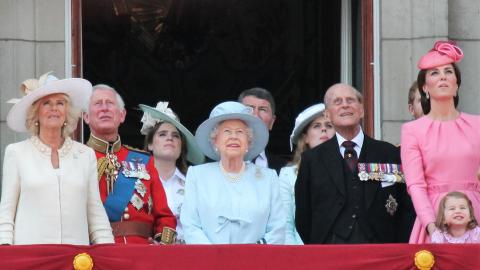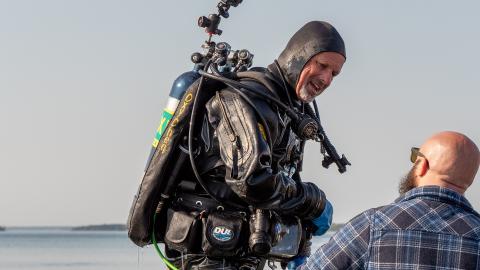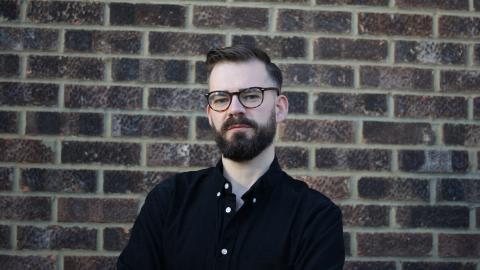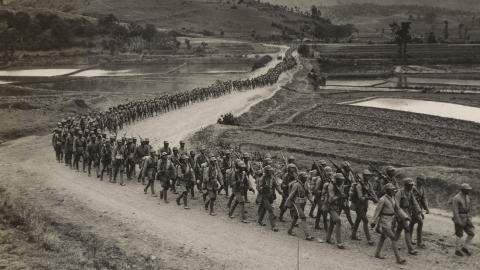(Mis)representing the Holocaust to Millennials
Millennials are stereotyped for many things: spending too much time online; eating too much avocado-toast; not having enough aspiration. But amidst these many stereotypes, one finds scarce mention of perhaps the most worrying reality: that a significant number know very little about the Holocaust.
A few years ago, I was shocked when a close friend, a Jewish then-teenager, asked me what the Holocaust was. Whilst I thought her unusual, recent studies show she’s one of many millennials that know little about the Holocaust. In a poll commissioned by the Holocaust Memorial Day Trust, 1 in 20 British adults said they didn’t believe the Holocaust happened, whilst 64% didn’t know how many Jews were murdered or grossly underestimated the number. A CNN poll echoed these findings; 1/3rd of Europeans knowing little or nothing about the Holocaust. In Austria, Hitler’s birthplace, 12% of 18-34-year olds had never heard of the Holocaust; rising to 20% in France. In the USA, the country with the largest Jewish population in the world, 9% of millennials said they had never heard of the Holocaust.
1 in 20 British adults said they didn’t believe the Holocaust happened
Academics and those involved in Holocaust education more broadly have been quick to condemn this level of ignorance, citing its threat to the longevity and historical accuracy of the Holocaust as memory. Their concern is, ultimately, that annual calls of Never Again! on Holocaust Memorial Day one day become Again?
A different kind of threat haunts millennials, however – both those who haven’t and, crucially, those who have heard of the Holocaust, making it potentially more dangerous than ignorance itself. Returning to millennial stereotypes, this threat has to do with the hyper-saturation of pop culture representations of the Holocaust: in films, television series, novels, et cetera. Holocaust memory therefore faces a double and somewhat paradoxical threat: a total absence of historical knowledge on the one hand, and an over-saturation of popular knowledge on the other.
Representing the Holocaust
'After Auschwitz,' Theodor Adorno’s famous idiom goes, 'there can be no more poetry'. In other words, the horrors of the Holocaust were so unthinkable that whilst modernity will forever be haunted by their possibility, they can never be represented; least of all in art.
And for many years there was no poetry after Auschwitz. Broadly speaking, this stemmed from a global desire to move on from the war; looking toward hope for the future and forgetting the horrors of the past. The post-war years were indeed a time of establishing new orders: adjusting to a new American superpower; dealing with the collapse of Empire; and negotiating realities of female emancipation and national reconstruction. With enough of their own to forget, people didn’t want to hear about Jewish suffering – least of all when it didn’t quench the hunger for a narrative of wartime self-glorification upon which to build a hopeful future. So, after initial attention in newsreels of liberation, forced German marches through camps and an abandoned Bernstein-Hitchcock documentary, the Holocaust fell silent in public culture. There was simply no climate of interest for its horrors.
In 1961 the climate changed with SS-Obersturmbannführer Otto Adolf Eichmann’s trial in Israel, broadcast internationally on the then-emerging media of television. Suddenly the Holocaust was tangible in the everyday space of people’s living rooms, forcing them to confront its horrors. This crow-like bespectacled figure charged with his senior role in the Final Solution and the various survivors who stood witness moreover gave such horrors names, faces, stories. In short: made them imaginable and, by extension, representable.
After Eichmann’s trial and a host of contextual shifts with the end of the 20th Century – a global feminist movement; the opening of repressed histories following Communism’s fall in Eastern Europe and Empire’s breakdown elsewhere; and approaching dates of commemoration marking half-a-century since the war – the Holocaust found an increasingly receptive audience. In turn, poetry abounded. Suddenly there were now-classical survivors’ memoirs to read, an American Miniseries (Holocaust, 1978) to watch on TV, fictional novels, documentaries, films, museums, and even a poetry collection called Auschwitz and After.
Then came Claude Lanzmann’s 1985 documentary Shoah, Steven Spielberg’s 1993 Hollywood classic Schindler’s List, and an eruption of debate over how the Holocaust could, and whether it even should, be represented.
Misrepresenting the Holocaust
Filmed over 11 years and running over 9 hours in its final cut, Lanzmann’s Shoah documents interviews with Holocaust survivors, witnesses and perpetrators during his visits to Holocaust sites across Poland. Hailed as a masterpiece and the finest documentary of all time, Shoah’s reception is well captured by critic Robert Ebert’s review: 'It is not a documentary, not journalism, not propaganda, not political. It is an act of witness'.
Spielberg’s Schindler’s List, on the other hand, is a 3-hour-length historical drama based on the novel Schindler’s Ark by Thomas Keneally. It tells the story of German businessman Oskar Schindler as he saves over a thousand mostly Polish-Jews by employing them in his factories during WWII. The film is often listed as amongst the greatest ever made, being nominated for 12 and winning 7 Academy Awards. In 2004, the Library of Congress selected it for preservation in the USA’s National Film Registry.
Adorno’s early dismissal of poetry after Auschwitz finds new form in the debate over their difference and coterminous success as representations of the Holocaust: one a documentation of historical fact, and the other a depiction of a particular historical story.
Simply put, this debate pits proponents of Schindler’s List against its opponents. On the one hand, proponents argue that representations of the Holocaust like Schindler’s List do not feign absolute historical accuracy, and neither should they. Instead, they aim to re-enliven the forgotten, making the unimaginable imaginable so those who come after Auschwitz can try to understand it. Opponents, on the other hand, use such criticisms as: understanding Auschwitz is impossible; representation without historical accuracy is not just dangerous but blasphemous; and the only representation one should consider is a factual documentation of survivors’ stories, as in Shoah. Adorno’s dismissal thence becomes a tension between poetry that is absolutely true to the Holocaust, and poetry that takes some creative liberties to heighten its visceral effect. That is, a tension over the sacred nature of historical truth.
Today representations of the Holocaust full of elaborations and elisions but ‘based on a true story’ abound. And apparently everywhere: whether books with front-covers of barbed wire on sale alike in the local supermarket and Auschwitz-Birkenau Museum-Memorial, or PG, 12, 15, 18 -rated movies and docuseries available at the click of a button to stream on Netflix or catch-up on Sky TV.
With this abundance, the Schindler’s List-Shoah debate on poetry after Auschwitz is necessarily revitalised. Indeed, the recent publication of Heather Morris’ sequel to her bestselling Tattooist of Auschwitz (2018), Cilka’s Journey (2019), was met with mixed reviews. Echoing criticism from authorities like the Auschwitz Memorial Research Centre that The Tattooist of Auschwitz contains 'numerous errors and information inconsistent with the facts, as well as exaggerations, misinterpretations and understatements', Cilka’s Journey has been criticised for its blend of fact and fiction. This tension parallels earlier controversy surrounding John Boyne’s (2006) The Boy in the Striped Pyjamas, marketed as ‘based on a true story’ but, according to many, in fact telling an elaborate, fictive and unrealistic narrative. In defence, Morris states that she has 'written a story of the Holocaust, not the story of the Holocaust'.
Indeed, despite such criticism, the popular success of these texts is testament to the power of their representation in raising awareness of the Holocaust as an historical event and promoting its affective understanding. We are therefore faced with a paradox between popular awareness and factual understanding. To illuminate this paradox further, let us consider criticism levelled at a factual documentation.
Renia’s Diary (2016) collates the memoirs of a young Polish Jewess as WWII breaks out. Though hailed by some as a lost masterpiece, others, like Professor of Modern History at Royal Holloway University, Dan Stone, see such reviews of Renia’s Diary as 'somewhat misleading'. Paralleling criticism of Morris’ and Boyne’s novels for historical inaccuracy whilst being marketed as ‘true’ stories, Stone criticises the way Renia’s Diary is dressed as an 'invaluable contribution to Holocaust literature' when its references to the war and Jewish persecution are few and far between. Though an unaltered documentation of the Holocaust, the novel offers very little by way of understanding it.
The paradox between popular awareness and factual understanding is thence, in other words, between historically elaborated but emotionally visceral representations – Schindler’s List; The Tattooist of Auschwitz; The Boy in the Striped Pyjamas – and historically true but often less visceral representations – Shoah; Renia’s Diary.
This necessarily leads us to the question of difference between fact and fiction in representation, and, if representation is intended for both understanding and awareness of the Holocaust, whether one kind of representation ought to take precedence over the other.
Mass media allows individuals to take on memories of pasts through which they did not live
More than ever before, in our hyper-mediated society that is both ‘post’ truth and at the ‘end of history’, the experiences of living in and understanding time are inextricably entwined with its representation; present as these representations are in our everyday.
For many, this is problematic. We need only look to the ways in which millennials consume information (primarily, studies show, via social media) and their subsequent ease of manipulation, as research into the 2016 USA Presidential elections and Brexit vote suggests. Others, however, see potential therein.
Developing what they variably term ‘prosthetic’, ‘post’ or ‘cultural’ memory, scholars like Virginia-based literary critic Alison Landsberg and Columbia-based historian Marianne Hirsch suggest the commodification of historical images circulating on a grand scale through mass media allows individuals to take on memories of pasts through which they did not live. Their idea works thus: at the interface of an historical narrative represented in an experiential media like a museum, movie theatre, book or photograph, an individual is able to insert themselves into that history and that history into their present. The affective transfer between the individual’s history and the represented history allows the latter to be taken on as part of the former. The individual thence develops a memory of that past through which they did not live. Foreseeing criticism of this memory’s legitimacy, Landsberg is clear that it does not describe somehow being able to experience an event like the Holocaust, but rather, better being able to imagine its experience.
According to these theories, representations of historical events like the Holocaust thence aim to educate contemporary populations on their reality, keep their memory alive and, as the adage goes, learn the lessons of the past so history doesn’t repeat itself; so we can continue to repeat Never Again! instead of asking Again? Crucially, no distinction is made between fact and fiction in representation.
Popular representations of the Holocaust like Schindler’s List, The Tattooist of Auschwitz and The Boy in the Striped Pyjamas have reached an extensive and significantly non-specialist audience. And they have engaged such audiences with this particular history in accessible, moving and educational ways. So what does it matter that their representations use elaboration and elision in order to do so?
The answer to this question can be revealed by considering one last example, and an extraordinary one at that. In 1995 Binjamin Wilkomirski published Fragments: Memories of a Wartime Childhood, an autobiographical account of surviving the Holocaust as a young Jewish boy alone in the Majdanek and Auschwitz concentration camps. The account was widely praised – 'achingly beautiful'; 'one of the great works about the Holocaust' – and went on to win the National Jewish Book Award. Wilkomirski himself was invited to participate in radio and television programmes as an expert witness. His experiences were later interviewed and videotaped by reputable archives; Fragments having elicited a strong response from other survivors who saw in it a spokesperson for their own experiences.
In 1998, however, Swiss journalist Daniel Ganzfried published two articles that questioned the historical reliability of Fragments, before denouncing it as fiction. With documentary evidence, Ganzfried showed that Wilkomirski’s childhood had been spent in the peace of neutral Switzerland and thence excluded the possibility of his having been in a concentration camp, 'except as a tourist'. Wilkomirski refused to respond to these accusations, except to say that his readers had always had the option to understand his book as fact or fiction. He then withdrew from public life.
By 1999, suspicion about Wilkomirski’s background led to a funded investigation by his literary agency and Zurich historian Stefan Maechler. From a combination of archival documents and familial interviews, it was revealed that Wilkomirski was born Bruno Grosjean on 12 February 1941 to a single mother in Switzerland. He was then placed in care, before being fostered by an elderly childless couple who brought him to Zurich in 1945 and officially adopted him in 1957. Whilst Wilkomirski’s alleged experiences in occupied Poland closely correspond with real experiences of Grosjean’s factual childhood in Switzerland, Grosjean was neither Jew nor Holocaust survivor. His memoir was, therefore, fraudulent; a work of imaginative creation.
For many. this stripped the work of any merit. If its so-called true story is fundamentally a lie, then its significance – someone pretending to be a Holocaust survivor in a moving way – is by extension 'kitsch'. Others saw in the incident a revelation about the nature of memory. If Grosjean could insert his troubled upbringing into experiences of the Holocaust to the extent that he felt and recalled them as his own, is his account not (prosthetic) memory? Furthermore, if those who actually experienced such things in the Holocaust were able to feel and recall their experiences in Wilkomirski’s account, can this representation accurately be called fiction?
Whilst the controversy surrounding Fragments constitutes an extreme example of Landsberg’s prosthetic memory, it nonetheless reveals the crux in tensions about Holocaust representation. Perhaps the purpose of representing events like the Holocaust is less historical accuracy than historical awareness, which is to say: memory rather than history. Contrary to history’s premise in establishing a factual evidence-based understanding of the past, memory is more concerned with the subjective imagination, feel and recollection of the past. It is, therefore, inherently and unapologetically unreliable. Targeting memory thence targets historical awareness and felt understanding, rather than approaching an event through its hard, abstract, black-and-white facts as history does. Indeed, even after the revelations about Grosjean, some critics maintain the importance of Fragments to an understanding of the felt experience of the Holocaust.
This does not, to be sure, license a postmodernist advocation of absolute relativism whereby anything and everything goes. The Holocaust remains a traumatic event whose history demands both respect and serious attention, not least in memory of the 6 million murdered. Equally significant, the ever-present threat of Holocaust revisionism and denial (which, with growing levels of open anti-Semitism across Europe, is on rise) demands stringent attention to the base facts and realities of the Holocaust as an historical event. As Professor Deborah Lipstadt says in the film adaptation of her famous day in court with Holocaust denier David Irving (Denial, 2016):
You can have opinions about the Holocaust. You can argue about why it happened and how it happened. But what I won’t do is meet with anyone, anyone, who says it didn’t happen. Because the Holocaust happened. It happened. And that isn’t opinion. That’s fact. And I won’t debate fact.
(Mis)representing the Holocaust to Millennials
The Holocaust is an historical event describing the Nazi-orchestrated murder of ~6 million Jews between 1941 and 1945 across occupied Europe. It is an historical fact, and there are historical truths about it.
But hard facts and abstract black-and-white truths don’t lend themselves to popular understanding and/or engagement. Especially in a world that increasingly relies on virtual media and visual dissemination of information. Especially with an historical event fast approaching its centenary as the number of those who experienced it still-alive falls. Especially given the significant number of millennials who know nothing about the Holocaust and get their information from popular culture. Given all of these factors, it is especially crucial that we have representations that engage with the Holocaust in a creative, imaginative and visceral way.
Poetry after Auschwitz is not just impossible; it is unequivocally necessary
Such representations will not, and in most cases cannot, be absolutely factually accurate. The nature of both popular culture and memory require narrative elaborations and elisions that present historical events in personal, tangible and memorable ways. This does not mean trading facticity for drama and popular appeal, however. Rather, it means approaching representation as a means to factual education, balancing historical accuracy and emotional relatability to facilitate memories of historical events. After all, it is the felt memory of an event and not the knowledge of its facts that might prevent its repetition; actively remembering the Holocaust, not simply knowing about it. And this, by extrapolation, means giving popular representations of the Holocaust the credit their work deserves for broadening active engagement with such distant and traumatic events.
Hence, poetry after Auschwitz is not just impossible; it is unequivocally necessary to ensure that there is and remains an ‘after’ to Auschwitz.
















